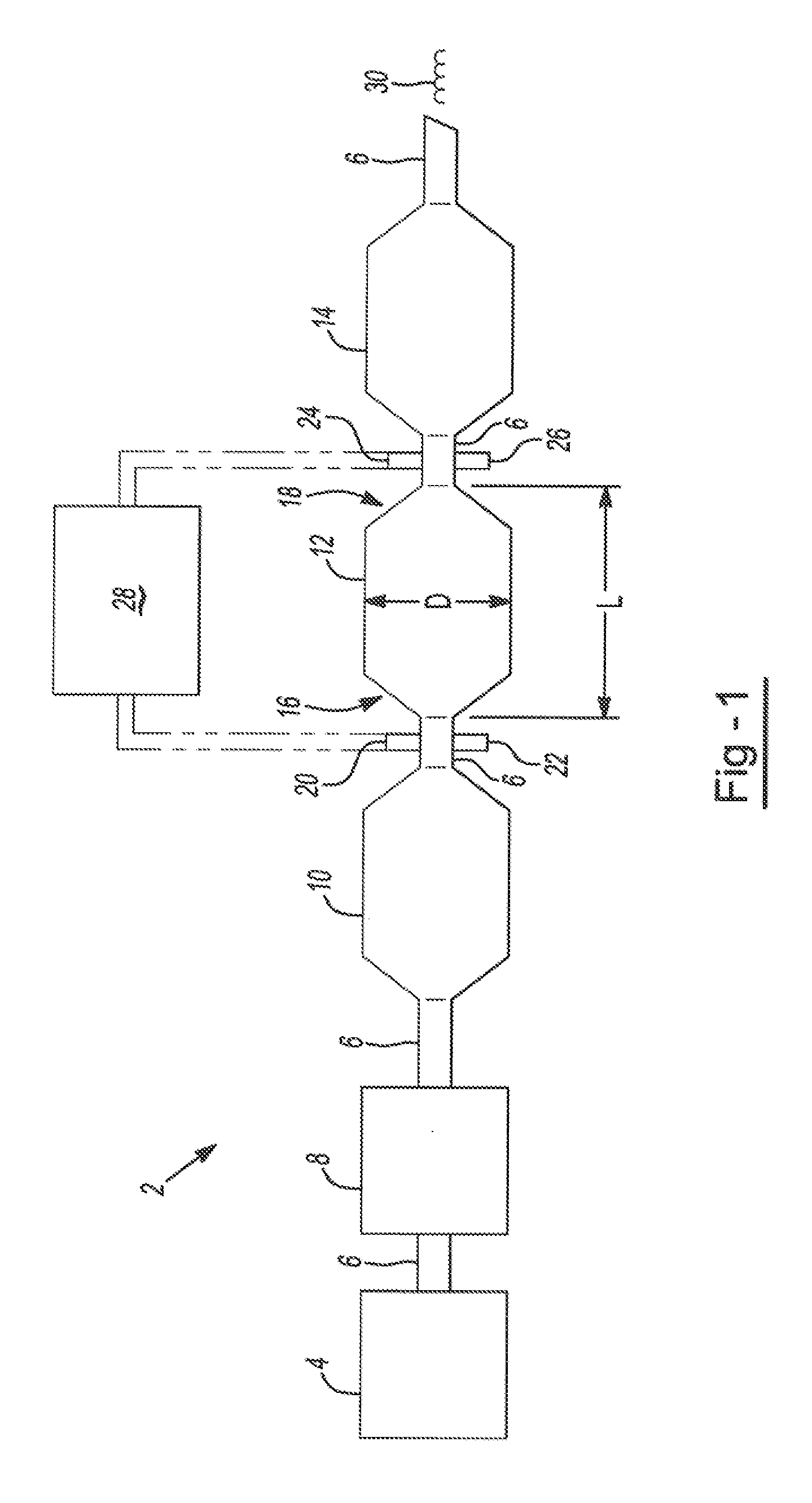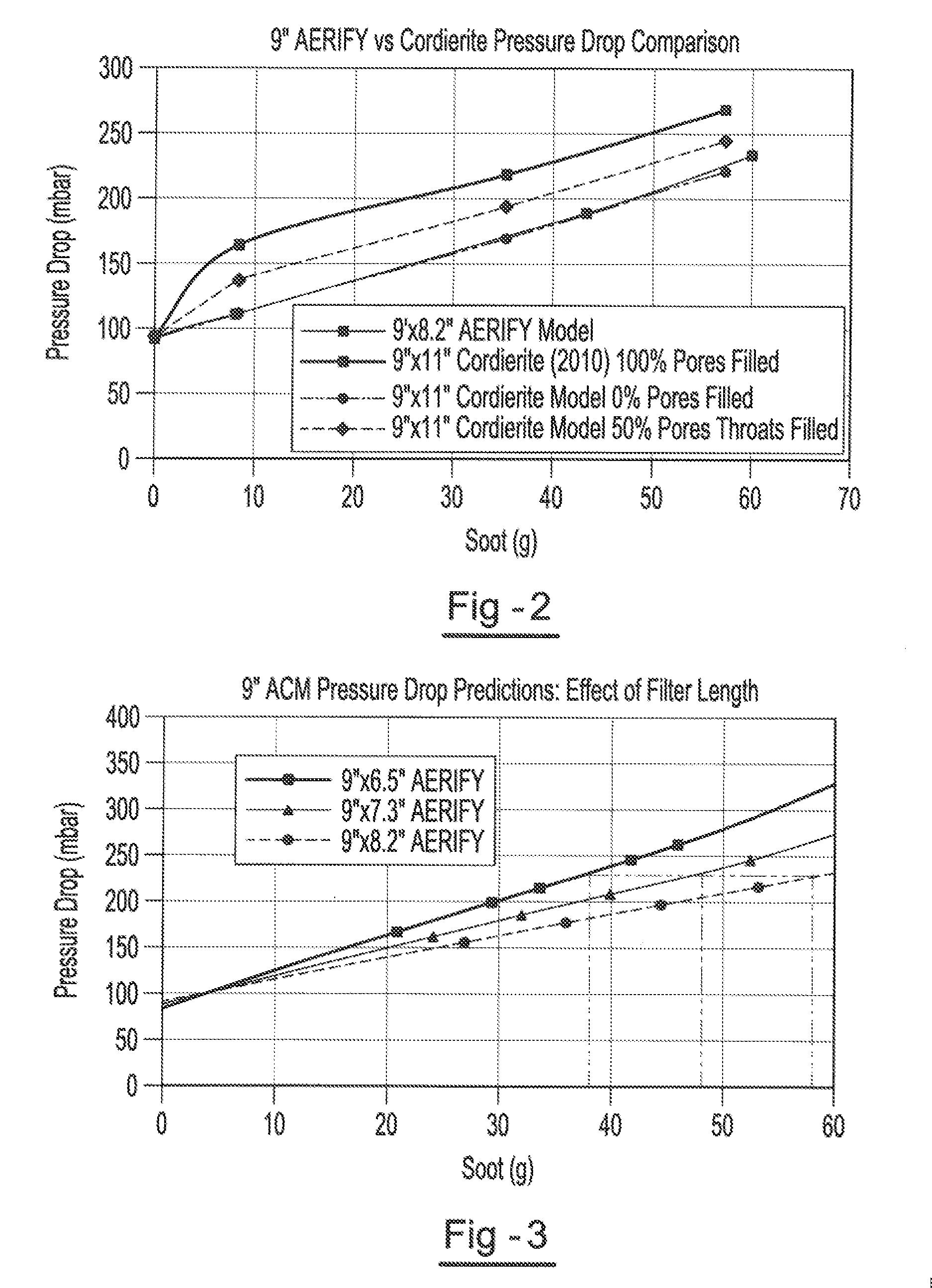Method and apparatus for decreasing fuel comsumption during particulate filter generation
a technology of particulate filter and fuel comsumption, which is applied in the direction of electrical control, electrical control, separation processes, etc., can solve the problems of increasing regeneration times, reducing the amount of space available in the exhaust system, and increasing the regeneration time, so as to reduce the size and reduce the amount of soot loading in the particulate filter. , the effect of accurately controlling the amount of soot loading
- Summary
- Abstract
- Description
- Claims
- Application Information
AI Technical Summary
Benefits of technology
Problems solved by technology
Method used
Image
Examples
Embodiment Construction
[0031]The following description of the preferred embodiment(s) is merely exemplary in nature and is in no way intended to limit the invention, its application, or uses.
[0032]The present invention is predicated upon providing an improved diesel particulate filter, an improved system for regeneration of a diesel particulate filter, and an improved method for designing a diesel particulate filter for a system. The present invention further regulates the engine so that when the engine speed is reduced to an idle while a regeneration cycle is in progress the temperature of the particulate filter is controlled and the particulate filter is not damaged.
[0033]An exhaust system includes a particulate filter. The particulate filter may be made of any material suitable that removes soot from an exhaust stream, and particularly from a diesel engine exhaust stream. Preferably, the diesel particulate filter may be made of any material that exhibits substantially linear characteristics that corres...
PUM
| Property | Measurement | Unit |
|---|---|---|
| temperature | aaaaa | aaaaa |
| temperature | aaaaa | aaaaa |
| temperature | aaaaa | aaaaa |
Abstract
Description
Claims
Application Information
 Login to View More
Login to View More - R&D
- Intellectual Property
- Life Sciences
- Materials
- Tech Scout
- Unparalleled Data Quality
- Higher Quality Content
- 60% Fewer Hallucinations
Browse by: Latest US Patents, China's latest patents, Technical Efficacy Thesaurus, Application Domain, Technology Topic, Popular Technical Reports.
© 2025 PatSnap. All rights reserved.Legal|Privacy policy|Modern Slavery Act Transparency Statement|Sitemap|About US| Contact US: help@patsnap.com



